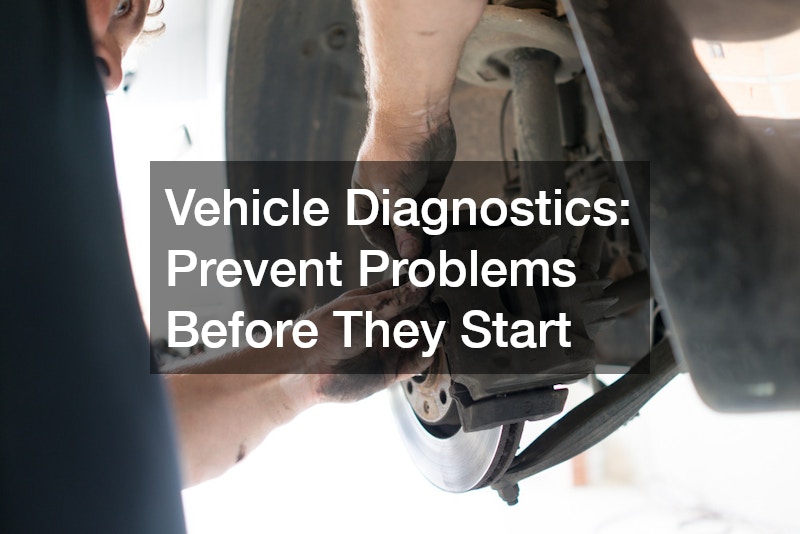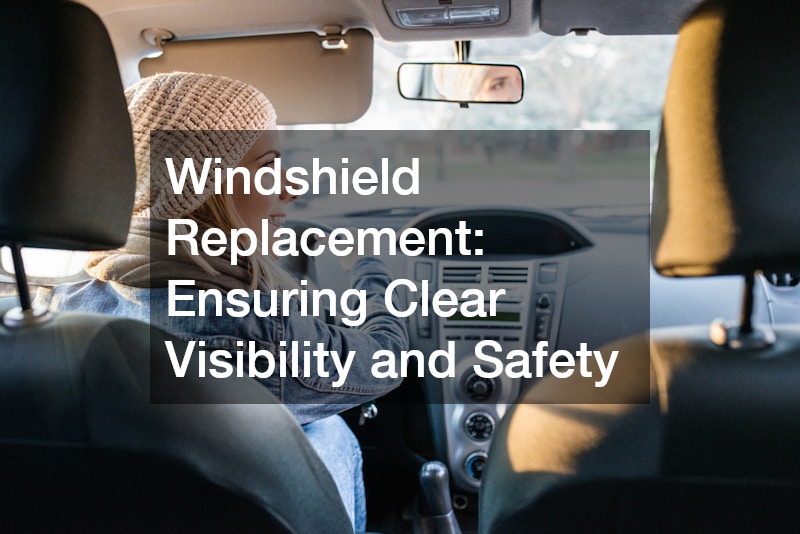Owning a car is a significant responsibility, and maintaining it in peak condition is essential to ensure safety, reliability, and longevity. Car maintenance services play a critical role in this process. From regular upkeep to protective services, each step you take to care for your vehicle helps preserve its value and performance. In this article, we’ll explore the top 10 essential services every car owner should consider to keep their vehicle in the best shape possible. These car maintenance services are crucial not only for the day-to-day functioning of your car but also for preventing expensive repairs down the road.
- 1. Auto Insurance Agency: Safeguarding Your Investment
- What to Look for in Auto Insurance
- 2. Vehicle Diagnostics: Prevent Problems Before They Start
- 3. Undercoating Service: Protecting Your Car from the Elements
- 4. Paint Protection Film Service: Keeping Your Car’s Exterior Pristine
- 5. Auto Dent Repairs: Fixing Those Unsightly Marks
- 6. Windshield Replacement: Ensuring Clear Visibility and Safety
- 7. Auto Window Tinting Services: Enhancing Comfort and Protection
- The Benefits of Auto Window Tinting
- Legal Considerations
- 8. Car Alignment: Ensuring Smooth and Safe Driving
- 9. Brake Repairs: Keeping You Safe on the Road
- 10. Car Audio Accessories: Enhancing Your Driving Experience
- Conclusion
1. Auto Insurance Agency: Safeguarding Your Investment

Auto insurance is not just a legal requirement—it’s one of the most important investments you can make to protect your vehicle and your financial future. Partnering with a reliable Auto Insurance Agency ensures you have the right coverage to safeguard against accidents, theft, and even natural disasters. The right insurance plan can save you thousands of dollars in the event of an unforeseen incident, helping to prevent a financial disaster.
According to a 2021 report by the Insurance Information Institute, around 75% of U.S. drivers carry full coverage insurance, underscoring the importance of this protective service. Without adequate insurance, a collision or unexpected damage could leave you financially vulnerable.
What to Look for in Auto Insurance
- Coverage Types: Liability, comprehensive, collision, and uninsured motorist coverage are common types of auto insurance. Depending on your car’s age, condition, and how much you drive, some coverages may be more important than others.
- Shop Around: Insurance premiums can vary significantly from one provider to another. By comparing quotes from different Auto Insurance Agencies, you can find a plan that offers both affordable rates and the right coverage.
- Discounts: Many Auto Insurance Agencies offer discounts for safe drivers, multi-car families, or those who bundle home and auto insurance. Look for discounts that could lower your monthly premiums.
- Policy Review: It’s important to review your policy annually. As your car ages or your driving habits change, your coverage needs may shift. An Auto Insurance Agency can help you update your policy to ensure that you’re never underinsured.
By ensuring that you have the right auto insurance in place, you’re not only adhering to the law but also safeguarding your vehicle and your finances from unexpected events. Choosing the right Auto Insurance Agency to guide you through these decisions can make all the difference in your coverage and overall peace of mind.
2. Vehicle Diagnostics: Prevent Problems Before They Start

Vehicle diagnostics are an essential service for keeping your car in peak condition. Modern cars come equipped with an onboard diagnostic system (OBD) that can monitor the performance of various components of the car, including the engine, transmission, and even the braking system. Diagnostic services use specialized tools to plug into your car’s OBD system and identify any underlying issues before they escalate into major problems.
Why Vehicle Diagnostics Matter
Ignoring minor performance issues can lead to significant breakdowns. For instance, a small engine misfire or sensor malfunction could ultimately lead to engine failure or costly repairs. By running diagnostic tests regularly, you can spot issues early and resolve them before they lead to larger problems.
How Often Should You Get Diagnostics?
- Regularly: Ideally, get your vehicle diagnosed every year, especially if it’s an older model.
- When the Warning Lights Appear: If your “Check Engine” light comes on, don’t ignore it. Even if the vehicle seems to be running fine, it’s a sign that something needs attention. Early intervention can save money and prevent more extensive repairs later.
- After Major Repairs: After a significant repair, it’s good practice to run a diagnostic check to ensure everything is functioning properly.
Vehicle diagnostics are a simple yet effective way to prevent costly repairs and ensure your vehicle is always running smoothly.
3. Undercoating Service: Protecting Your Car from the Elements
Auto insurance is not just a legal requirement—it’s one of the most important investments you can make to protect your vehicle and your financial future. However, protecting your car goes beyond insurance. Services like undercoating are crucial to maintaining the longevity and value of your vehicle. An undercoating service involves applying a protective layer to the underside of your vehicle, shielding it from environmental damage such as moisture, salt, and road debris. This service is especially valuable for drivers in areas where roads are treated with salt in the winter or those living near the coast where salty air is prevalent.
According to a 2021 report by the Insurance Information Institute, around 75% of U.S. drivers carry full coverage insurance, underscoring the importance of this protective service. But without proper maintenance, such as undercoating, your vehicle could still suffer from long-term damage that insurance alone won’t cover.
The Importance of Undercoating
The undercarriage of your vehicle is constantly exposed to dirt, water, and road salts, which over time can cause corrosion. Rust can weaken the frame of your car, damage essential components, and lead to expensive repairs. Applying undercoating can prevent this by forming a barrier between your vehicle and the elements.
When Should You Get Undercoating?
- Once a Year: It’s ideal to apply undercoating at least once a year, particularly before winter or after any major road salt exposure.
- New Vehicles: If you’ve just purchased a new vehicle, having undercoating applied early on will protect it long-term.
- When You Notice Rust: If you start to notice small rust spots on the undercarriage, getting undercoating can stop the damage from spreading.
By ensuring that you have the right auto insurance and maintaining your car with services like undercoating, you’re not only adhering to the law but also protecting your vehicle and finances from unexpected events and long-term damage.
4. Paint Protection Film Service: Keeping Your Car’s Exterior Pristine
Paint protection film (PPF) is a clear, durable film that’s applied to the exterior of your car, providing an extra layer of protection against scratches, chips, and the harmful effects of UV rays. For anyone looking to maintain their vehicle’s aesthetic appeal and preserve its resale value, PPF is a must-have service. It’s particularly beneficial for people who frequently drive in areas with lots of road debris or harsh weather.
Why Choose Paint Protection Film?
PPF works like a shield against environmental factors such as road stones, bugs, and bird droppings. It can also prevent discoloration caused by prolonged sun exposure. Unlike waxing, which offers temporary protection, PPF provides long-lasting protection for several years, which can save you money in the long run by preventing paint damage.
How PPF Benefits Your Vehicle
- Scratch Resistance: PPF forms a protective layer that resists light scratches and abrasions, keeping your car looking new longer.
- UV Protection: The film prevents harmful UV rays from oxidizing the paint and causing fading.
- Easy Maintenance: With PPF, your car’s exterior is easier to clean, as the film repels dirt and debris.
For anyone looking to preserve their vehicle’s appearance and maintain its value, a paint protection film service is a wise investment.
5. Auto Dent Repairs: Fixing Those Unsightly Marks
Dents are inevitable, whether they come from parking lot mishaps, hailstorms, or minor accidents. Fortunately, modern auto dent repair techniques can restore your car’s appearance without the need for expensive repainting. Auto dent repairs are essential not just for aesthetics but also for preventing further damage, such as rust, from taking hold.
The Importance of Auto Dent Repairs
When a dent occurs, it’s important to address it quickly to avoid additional damage. Dents can compromise the paint, creating opportunities for rust to develop. Minor dents can also affect your car’s aerodynamic efficiency. In some cases, dents in critical areas can even cause structural issues. Therefore, addressing them early is key to maintaining your vehicle’s integrity.
Paintless Dent Repair (PDR)
One of the most cost-effective methods of fixing minor dents is paintless dent repair (PDR). PDR uses specialized tools to massage the dent back into its original shape without the need for repainting. This method is fast, affordable, and preserves the factory finish of the car.
6. Windshield Replacement: Ensuring Clear Visibility and Safety

Your windshield is one of the most important safety features of your vehicle. A cracked or damaged windshield can severely impact your visibility and the structural integrity of your car in the event of an accident. According to a 2023 study by the National Highway Traffic Safety Administration (NHTSA), windshield integrity is critical in rollover accidents, as it helps prevent ejections and protects occupants.
When to Replace Your Windshield
- Cracks or Chips: Small cracks or chips might seem harmless, but they can spread over time, reducing visibility and making your windshield prone to shattering.
- Obstructed Vision: If the crack or chip obstructs your line of sight, the windshield should be replaced immediately for safety.
- Regulations: Some regions have strict regulations regarding windshield integrity, especially if the damage is in the driver’s line of sight.
Windshield replacement is an essential service that should not be delayed. Not only does it protect your vision, but it also ensures your car remains structurally sound during an accident.
7. Auto Window Tinting Services: Enhancing Comfort and Protection
Auto window tinting services offer a variety of benefits, from enhanced privacy to UV protection. Tinting reduces the amount of heat and glare entering the car, making the interior more comfortable, especially during hot summer months. It also helps protect the car’s interior from UV damage, preventing fading of upholstery and dashboards.
The Benefits of Auto Window Tinting
- UV Protection: High-quality tint blocks up to 99% of harmful UV rays, helping protect your skin and your car’s interior from sun damage.
- Temperature Control: Auto window tinting reduces the amount of heat entering the vehicle, which can reduce the need for air conditioning and improve fuel efficiency.
- Increased Privacy: Tinted windows make it harder for people to see inside your vehicle, providing added privacy and security.
Legal Considerations
Before opting for auto window tinting services, check your state’s regulations on the allowable tint levels. In many states, there are laws governing the level of tint allowed on different windows, and non-compliance could result in fines.
8. Car Alignment: Ensuring Smooth and Safe Driving
Car alignment is essential for maintaining your car’s handling and ensuring that your tires wear evenly. Misalignment can cause uneven tire wear, poor handling, and decreased fuel efficiency. Getting your car aligned regularly is a simple but effective way to improve the lifespan of your tires and ensure a smoother, safer driving experience.
When to Get an Alignment
- Every 1-2 Years: Regularly check your alignment to ensure it stays within factory specifications. Misalignment can occur due to wear and tear or from hitting potholes.
- After an Impact: If you hit a curb, pothole, or other obstruction, have your alignment checked as soon as possible.
Proper alignment reduces tire wear, improves fuel economy, and enhances the safety and comfort of your drive.
9. Brake Repairs: Keeping You Safe on the Road
Brakes are one of the most critical safety systems in your car. Regular brake maintenance and repair are essential for ensuring your vehicle can stop quickly and effectively in an emergency. According to the National Traffic Safety Administration, brake failure is a leading cause of accidents in the U.S., making brake repairs a priority.
Signs You Need Brake Repair
- Squeaking or Grinding: These sounds indicate that the brake pads are worn down and need replacement.
- Soft Pedal: A soft or sinking brake pedal could mean air in the brake lines or a fluid leak.
- Vibration: If you feel vibrations or pulsations when braking, it could be a sign that the brake rotors are warped.
Brake repairs are not something to delay—your safety on the road depends on it.
10. Car Audio Accessories: Enhancing Your Driving Experience
Upgrading your car’s audio system isn’t just for audiophiles—it’s for anyone who spends time in their car and wants a more enjoyable experience. High-quality car audio accessories such as speakers, subwoofers, and amplifiers can transform your daily commute into an enjoyable experience, providing superior sound quality and bass response.
Why Invest in Car Audio Accessories?
- Better Sound Quality: High-quality speakers and amplifiers improve the clarity and depth of your music.
- Customizable Systems: Whether you’re into heavy bass or crystal-clear vocals, upgrading your audio system allows you to tailor it to your preferences.
- Increased Vehicle Value: Upgrading your car’s audio system can also increase its resale value, as buyers often value a premium sound system.
Installation
For optimal sound quality, it’s important to have your audio system professionally installed. A proper installation will ensure that the components are well-integrated into your vehicle’s electrical system without causing damage.
Conclusion
Keeping your car in peak condition requires a combination of regular maintenance and protective services. From auto insurance that safeguards your financial well-being to brake repairs that ensure your safety, each service plays a crucial role in maintaining the functionality and longevity of your vehicle. Regular attention to diagnostics, undercoating, window tinting, and other services can prevent costly repairs, enhance your driving experience, and preserve your car’s value for years to come. By prioritizing these essential services, you’re investing in both the health of your car and your peace of mind on the road.
